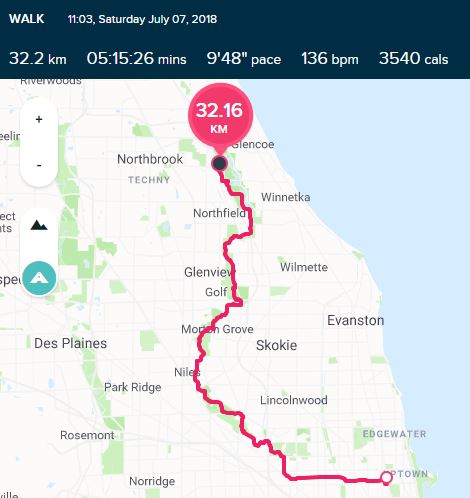The New York Times has published an interactive map showing the 2016 presidential election results at the precinct level. Generally, precincts are the smallest unit of reporting electoral data, often with just a few hundred people in them. My precinct, for example, has just over 1,000 residents and occupies less than 6 hectares.
A companion article breaks down how most of the precincts overwhelmingly went to one or the other candidate. Mine, for example, had 613 votes for Hillary Clinton and just 40 for Donald Trump. (And I'm wondering who the 40 could possibly be.)
The map we published also offers two bits of additional context to help you think about the 2016 vote.
First, we give you a measure of how the area around a precinct compares with other areas. That measure is based on the choices of the nearest 100,000 voters, as well as those within a 10-mile radius.
Second, we tell you how long it would take you to drive, without traffic, to the nearest precinct that voted for the other candidate of a major party. By these measures, for example, the area around the Times headquarters in Manhattan had a higher share of Clinton voters than 96 percent of the country, and the nearest Trump precinct, in Williamsburg, Brooklyn, is a 36-minute drive away.
It's total Daily Parker bait, of course.
As London broils in 34°C heat today, New Republic's Emily Atkin asks, "Why are some major news outlets still covering extreme weather like it's an act of God?"
The science is clear: Heat-trapping greenhouse gases have artificially increased the average temperature across the globe, making extreme heat events more likely. This has also increased the risk of frequent and more devastating wildfires, as prolonged heat dries soil and turns vegetation into tinder.
And yet, despite these facts, there’s no climate connection to be found in much news coverage of extreme weather events across the globe—even in historically climate-conscious outlets like NPR and The New York Times. These omissions, critics say, can affect how Americans view global warming and its impact on their lives.
Meanwhile, the Guardian (who, one hopes, have air conditioning in their offices) are reporting that 87% of the earth's oceans have human-caused damage.
Go, us!
I probably won't have time to read all of these things over lunch:
Share that last one with your non-technical friends. It's pretty clever.
It's been a busy news day:
There was also an article on tuple equality in C# 7.3 that, while interesting to me, probably isn't interesting to many other people.
My dentist is all the way up in Hubbard Woods, which turns out to be a 21.3 km walk from my house. I know that because I walked it this morning. In fairness, I did it in two roughly-equal parts with a stop in downtown Evanston for lunch.
But my total time for the walk, 3:12:36, over what was almost exactly a half-marathon, implies a legal finishing time for the Chicago Marathon (6:30 allowed for the 42.2 km course).
I'm in a step challenge with a co-worker who got 11,000 ahead of me yesterday. Let's see how he does with the 28,000 I've gotten so far today.
And, as predicted, I have already blown away my 7-day personal step record with 159,083 so far this afternoon.
Back in June 2016, I walked 29 km in one go, and posted "I don't need to do this ever again."
You can see where this is going.
Here's what I did yesterday:

That distance, 32.2 km, is exactly 20 miles. I actually walked about 800 m farther than that because I accidentally paused my Fitbit for a few minutes. Also, the map's big red 32.16 km (which is just short of 20 miles) appears to be a rounding error as you can see from the official total at the top.
This time I walked up the North Branch trail, and I'm proud to say I walked the entire length of the Red Path, from Gompers Park in Chicago up to the Skokie Lagoons Trail in Glencoe. It's shadier, and leafier, and doesn't parallel a working railroad. I mean, you don't meet this guy on the Green Bay trail, for example:

The weather was nearly perfect: 25°C under crystal-clear skies. (I might have done better a few degrees cooler.)
And now for my personal records (PRs):
- Farthest distance in one continuous walk: 32.2 km
- Most steps in one continuous walk: 36,942
- Longest continuous exercise (including biking): 5 hours, 15 minutes
- Most steps in one day: 47,452
- Farthest walked in one day: 41.09 km
- Most active minutes in one day: 520
Depending on the weather, on Thursday I expect to hit another PR: most steps in a 7-day period. Currently that's 147,941 (set February 27th), but the 7 days ending yesterday totaled only 144,651.
My top-5 single-day step records are now:
Also, not for nothing, I am kind of annoyed with myself that I didn't sucker any of my friends into a step challenge this weekend.
I didn't have a chance to read these yesterday:
Now I'm off to work. The heat wave of the last few days has finally broken!
Before Scott Pruitt and friends destroy the Environmental Protection Agency, it's worth remembering the good it has done over the years:
Whatever happens to the EPA, this might be a good time to reflect on its legacy, especially in urban spaces. Though environmentalism conjures “America the Beautiful” images of purple mountains and unspoiled wilderness, much of the EPA’s heaviest lifting in rescuing this nation from its own filth happened in cities.
Long before fracking made tap water ignitable, Cleveland’s Cuyahoga River caught on fire—a lot. The saga is a well-trod part of the EPA’s origin story, but it’s still worth revisiting. A 1969 river fire caught Time’s attention in an article on American sewage systems, headlined in print as “The Cities: The Price of Optimism.”
The EPA also went to great lengths to clean up the Great Lakes. That Time article described Lake Erie as a “cesspool" created by the waste of “Detroit's auto companies, Toledo's steel mills, and the paper plants of Erie, Pa.” More notable city water cleanup projects include the agency’s 1983 project to restore the Chesapeake Bay or the 2002 project to clean up the Hudson River after New York City became the last city to dump sewage at sea in 1992.
Congress passed the Clean Air Act in 1963, but it was the creation of the EPA, combined with amendments to the law in 1970 and 1977, that added regulatory weight to the law’s mandate of reducing air pollution. The agency worked with companies and set limits on air pollutants and emissions from source like chemical plants, utilities and steel mills. Before the EPA, smog enrobed many U.S. cities in a lethal hydrocarbon haze, none more infamously than Los Angeles.
On that last point, I remember L.A. in the 1970s, and I watched it transform. Same here in Chicago. When Republicans whine about regulations hurting business, what they really mean is they want to pass along all the external costs of industry to us, the way they used to. Environmental regulations do cost industry money—because those are the real costs.
So when Scott Pruitt says he wants to reduce the burden on business, realize that he wants to put that burden right back on you.
Large areas of the planet are experiencing record heat this week, as predicted by the anthropogenic climate change hypothesis:
No single record, in isolation, can be attributed to global warming. But collectively, these heat records are consistent with the kind of extremes we expect to see increase in a warming world.
As we reported, Quriyat, Oman, posted the world’s hottest low temperature ever recorded on June 28: 109 degrees (42.6 Celsius).
That's right; in Oman overnight on June 28th, it never got below a potentially lethal temperature.
It's beginning to look a little like Christmas...on Venus.
Amsterdam is building a new subway line directly beneath the Amstel River, so they drained it, as one does. Then they let a team of archaeologists go wild:
The excavations in the Amstel yielded a deluge of finds, some 700,000 in all: a vast array of objects, some broken, some whole, all jumbled together. Damrak and Rokin proved to be extremely rich sites on account of the waste that had been dumped in the river for centuries and the objects accidentally lost in the water. The enormous quantity, great variety and everyday nature of these material remains make them rare sources of urban history. The richly assorted collection covers a vast stretch of time, from long before the emergence of the city right up to the present day. The objects paint a multi-facetted picture of daily life in the city of Amsterdam.
The city has published an online catalog that you can view chronologically or alphabetically.